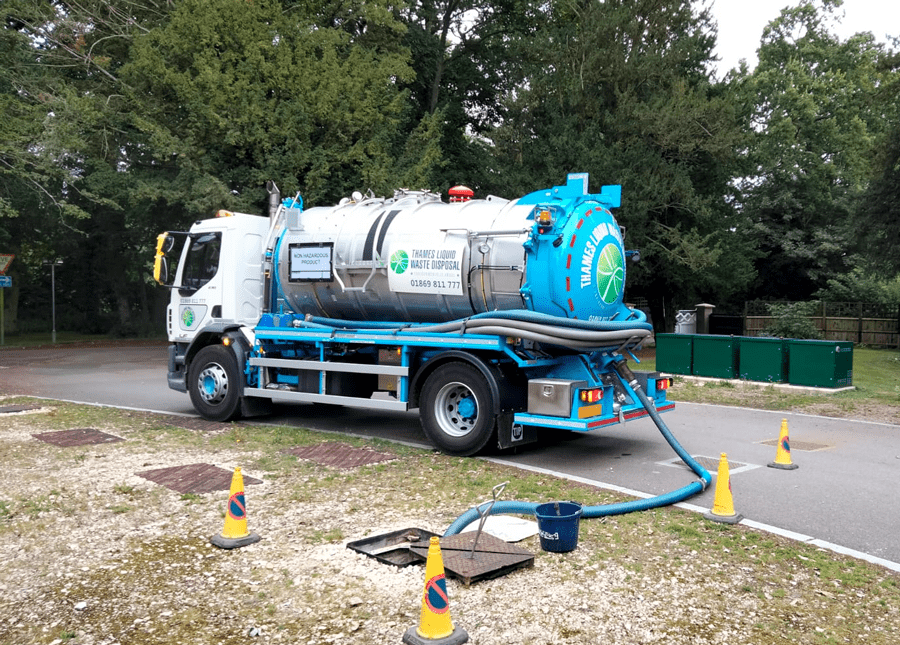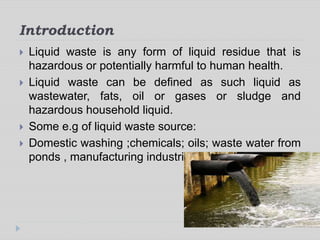Getting My Reclaim Waste To Work
Getting My Reclaim Waste To Work
Blog Article
The Greatest Guide To Reclaim Waste
Table of ContentsThe Best Strategy To Use For Reclaim WasteReclaim Waste Can Be Fun For AnyoneWhat Does Reclaim Waste Mean?8 Easy Facts About Reclaim Waste ExplainedAll about Reclaim WasteThe Best Guide To Reclaim Waste

Never put hazardous compounds down sinks, commodes or stormwater drains Substances consisting of gas, grease, oil, chemicals and herbicides, and solvents such as paint strippers ought to not be poured down sinks, bathrooms or stormwater drains pipes. These substances are challenging to remove in the sewer therapy process and create contamination problems in our regional waterways.

Fluid waste is a term that covers a wide variety of materials, there's a great factor why leaving its disposal to the specialists is suggested. Liquid waste is non-solid material that has no further usage and needs to be dealt with and disposed of according to neighborhood, state and federal regulations.
The Ultimate Guide To Reclaim Waste
Examples of liquid waste can consist of wastewater, fats, oils or oil, made use of oil, fluids, solids, gases or sludges and hazardous house fluids, there are some that are taken into consideration to be much more hazardous than others when it comes to the environment and the health of pets and humans alike. It's consequently that each state and territory have actually strict regulations linked to liquid waste administration.
Fluid waste can be kept in holding storage tanks or packaged in drums, intermediate mass containers or approved little containers before either being dealt with or gotten rid of by means of outsourced vacuum vehicles. Provided the nature of the products, fluid waste can not enter the general waste stream and there are stringent policies on exactly how to throw away it correctly.
(https://medium.com/@leonaube33101/about)Depending on a decision of the degree of danger, it may be required to remediate those websites. Additionally, hazardous fluid chemical wastes are controlled waste and needs to be tracked in accordance with the state waste legislation. Under the chain of custody and responsibilities, proprietors are liable and liable for waste generated by a company.
One of the core applications for superabsorbent polymers (SAPs) is fluid waste solidification. industrial wastewater treatment. SAPs are utilized by waste monitoring experts to avoid potentially hazardous liquids from entering rivers, groundwater aquifers, and various other sensitive environments. Due to the fact that fluids can rapidly transfer pollutants into ecological receptors and possibly add to geotechnical failures, fluid wastes are generally restricted from disposal in garbage dumps
The 45-Second Trick For Reclaim Waste
Generally, totally free liquids are fluids that separate from the strong section of waste material. Liquid waste can consist of the following: HDD mud and cuttings Garbage dump leachate Wastewater treatment sludge & biosolids Dug up debris Oil and gas drill cuttings Clearing up pond filth Hydro Excavation slurry Coal burning residuals/ash Storage tank base sludge Concrete grinding/polishing slurry Related Short article: For a useful example of totally free liquids separating from waste material, think about the complying with situation: A waste monitoring professional loads a dump associate sludge from a wastewater therapy plant's aeration basin, throughout a regular maintenance occasion.
When the driver gets here at the landfill, he notices water leaching from the sludge and putting from the dump vehicle. The load was denied by the garbage dump and the motorist was required to deal with the waste as a fluid waste at a special facility, which boosted the disposal costs enormously.
We likewise need to be liable for the proper disposal of our waste materials. It is not enough that we pay waste disposal business to take care of our rubbish.
All about Reclaim Waste

Segregating your waste can begin inside the home. Segregate dry and liquid waste as well as edible waste, naturally degradable and non-biodegradable products.
You can use old garbage can, pail, garden pot or old plastic drums. Drill four to 5 openings in the container so the air can circulate. Layer the bottom with soil to take in the wet waste. Start the composting process. Layer the garden compost with wet and dry check out this site waste as well as dirt to keep a balance in between the wet and the dry.
4 Simple Techniques For Reclaim Waste
Cover the compost bin. When a week, include dirt in addition to the compost. To assist in faster decomposition, you can additionally add semi composted dirt to the compost. Maintain the garden compost. If you notice the smell is coming to be as well solid, add added papers and paper waste or include more openings to the compost bin to keep the equilibrium of the waste products.
We additionally require to be accountable for the appropriate disposal of our waste materials. It is not sufficient that we pay waste disposal business to take treatment of our rubbish.
Our waste, our obligation. Have you ever before questioned what occurs to your liquid waste after it's accumulated? Did you recognize that liquid waste can be recycled?
Fascination About Reclaim Waste
Segregating your waste can begin inside the home. Set apart dry and liquid waste as well as edible waste, biodegradable and non-biodegradable products.
You can use old trash can, container, garden pot or old plastic drums. Drill four to five holes in the container so the air can flow. Layer all-time low with soil to soak up the damp waste. Beginning the composting procedure. Layer the garden compost with damp and completely dry waste as well as soil to preserve an equilibrium in between the wet and the completely dry.
To assist in faster decomposition, you can likewise add semi composted dirt to the compost. If you notice the scent is coming to be as well solid, include added newspapers and paper waste or include even more holes to the compost container to keep the balance of the waste products.
Report this page